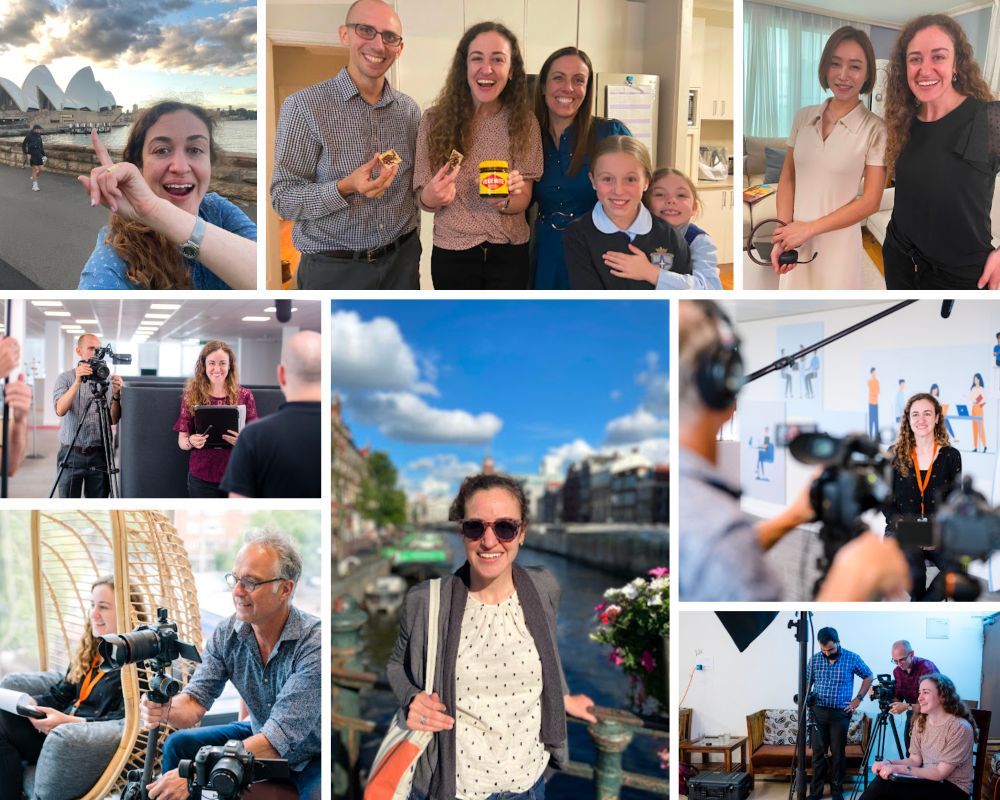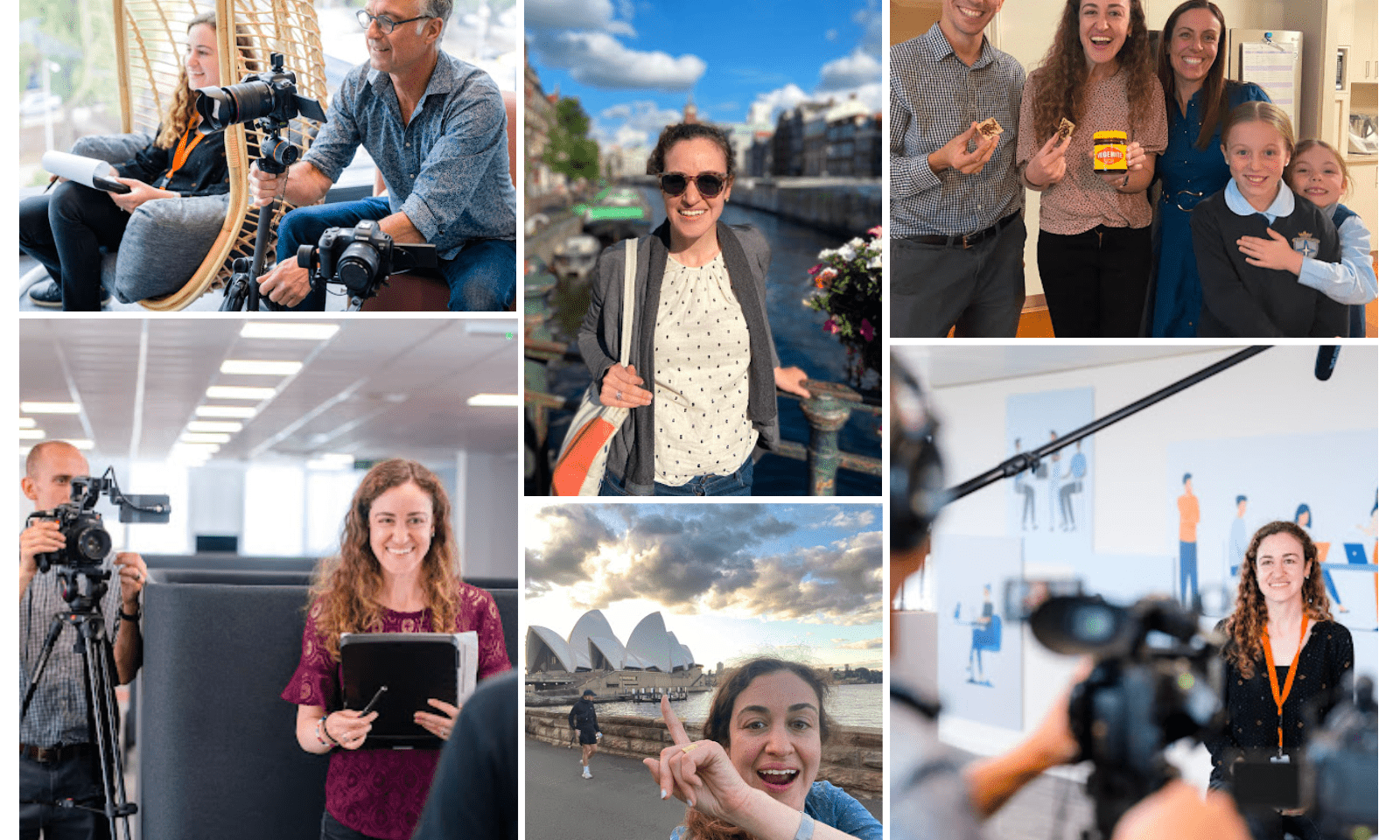What I’ve Learned from Five Years Uncovering Employee Stories
Stories Inc. is pleased to announce that Anna Lippe has been promoted to Director of Customer Success. In this post, Anna reflects on her five years uncovering employee stories and creating employee story content for brands of all sizes and industries. And, Anna shares the experiences that have shaped her into the culture communication leader she is today.
My five years at Stories Inc. has taken me from pharmaceutical labs to home offices in India to construction sites with hard hats. I’ve interviewed scientists, welders, video game developers, CEOs, law students, nurses, interns, veterans, highway engineers, even an Ambassador of Fun and a Quest Designer. I’ve learned a lot about almost every profession out there.
As I reflect on my time as a creative strategist, I realize it’s a privilege to listen to people’s stories and move past the surface level conversations we often associate with talking about work. It’s also incredibly rewarding to see these stories drive real progress towards our clients’ talent, DEI, and employer brand goals.
I’m thrilled to bring all that I’ve learned to my new role as Director of Customer Success, where I will be leading our team of account managers to deliver exceptional work for our clients. In this role, I’ll be able to use all of my culture communication experience to make an even greater impact on our clients’ most important objectives.
During this time of transition, I thought it’d be fun to share the top takeaways I’ve gained from interviewing storytellers and creating employee storytelling content these past five years. Let’s do it!
Takeaway #1: Everyone has a story. You just need to know how to uncover and capture it.
If there’s one thing my job has proven time and time again, it’s that truly everyone has a story; they just need a facilitated and psychologically safe environment to share.
Nothing makes me feel more connected with a storyteller than when they are vulnerable in sharing their true experience, and we give them a platform to open up (even if they are initially nervous!). With the right prep, environment, and follow-up questions, we get a story every time.
And I’ve been touched with the many emails I’ve received from storytellers about how much they loved the experience!
Takeaway #2: People don’t remember catchphrases, but they remember stories.
“We’re like a family.”
“We support work/life balance.”
“Opportunities for growth.”
I’ve heard each of these platitudes hundreds (maybe thousands!) of times. While they are positive sentiments, these catchphrases aren’t memorable and they don’t really tell you anything about the real employee experience (especially when everyone else is saying them, too).
The past five years have only deepened my conviction that stories are the best approach. By uncovering employee stories, you can create content that is specific, personal, and provide real insight into what it’s actually like to work at a company.
I don’t remember platitudes or generic catchphrases, but I do remember these true stories:
- The construction worker whose colleague helped him put on his work boots, every day, for months while he was recovering from an injury.
- A ship builder who drives by the shipyard on his days off and feels pride that his work is helping keep our troops safe.
- The proud video game developer who, upon realizing the water in the game was accidentally the wrong color, hustled to change it back before it was too late.
- The med student from an HBCU who went into medicine because of mentorship from diverse cardiologists.
- The spouse who wrote a thank you letter to the company CEO for the parental leave benefits that allowed her husband to support their newborn and growing family.
- The scientist whose product got approved and jumped up and down to celebrate.
These stories are memorable, inspirational, and uniquely reflect that organization — they couldn’t happen just anywhere. They help candidates tell companies apart, when many of the mission/vision statements can blend together.
Takeaway #3: Company culture is nuanced. Your communication of it should be, too.
Over my five years as a content strategist, I’ve uncovered employee stories in ~15 countries, from Egypt to Singapore to Scotland. (Did I mention it’s the best job!?). I’ve been able to see universal culture in action as well as how a global employer brand is, inevitably, uniquely experienced by each regional culture and various talent groups.

This experience has reinforced for me that company culture is incredibly nuanced. And, that the communication of it needs to be, too. This means…
- Talent wants to know what your culture is like no matter where they work – which is why it’s so important to show what mission, purpose, and values look like in offices around the world.
- They also want to know what your culture is like in their specific country or region. For example, there are different expectations of work/life balance in Japan vs. the United States. For this reason, we often interview storytellers in both English and their native language in order to create content that resonates best with the local market.
- And, don’t forget the other ways people identify at work. They identify as an engineer; a working parent; an emerging leader. Showing how your culture is experienced by various groups across your company honors the diverse perspectives that make your workplace unique.
One of the most impactful projects of my career was partnering with Dell Technologies to communicate their global and local culture across nine global locations.
Takeaway #4: Amplify employee voices through tough conversations.
The past three years have provided no shortage of difficult conversations or decisions in the workplace. We’ve seen clients want to tackle sensitive conversations around topics like Diversity, Equity and Inclusion and mental health at work, but feel paralyzed by not wanting to say the wrong thing.
Time and time again, I’ve seen that amplifying employee voices is the most authentic and effective way through these tough conversations. This approach invites your employee into the conversation and shows them that their voice is heard. And as with other types of culture topics, uncovering employee stories is the best way to prove what inclusion, mental health, etc. actually look like in your culture.
An example of this — and a project I was really proud to be a part of — is how LexisNexis brought a new fellowship to life. Created in partnership with LexisNexis’ African Ancestry Network and Rule of Law Foundation, the fellowship partnered with 12 Black law students at Historically Black Colleges and Universities (HBCUs) to work towards eliminating systematic racism in legal systems.
Uncovering stories from these students, who in many cases were the first in their family to go to college, gave tangible proof that the company is committed to DEI. And the stories were more beautiful and memorable than any tagline. Creating content featuring the recipients of this program crystalised the why behind these DEI efforts, and made for compelling and authentic video content.
Here’s to 5+ more years of telling employee stories
The last five years have taught me so much about what it means to be a storyteller, a team member and, most especially, a culture communicator. I’m especially grateful to all of my clients who trusted me with their stories over the years. Each and every one of you has taught me something new and shaped the perspective I bring into my new role.
As Director of Client Success, I can’t wait to continue to support our clients as they look for new ways to tell stories (two of our new offerings, Facilitated Conversations and Dynamic Event Coverage, come to mind!) and reach their most critical talent goals.
If you’ve read this long, thank you! I am so excited for this new chapter of my career at Stories Inc. Please connect with me and reach out to share your thoughts, reflections, or just to say hi. I’m here for you!

